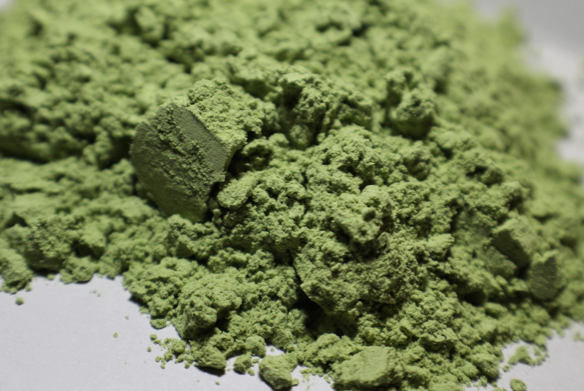Have you ever wondered what the mystery plant kratom is all about?
From its unique botanical properties and alkaloid composition to how its various strains differ and the pharmacological effects they produce, kratom continues to fascinate both users and researchers alike. As its popularity rapidly grows in the West, many people are left with more questions than answers when it comes to understanding this extraordinary plant from Southeast Asia.
In this guide, we’ll uncover kratom’s secrets by exploring its botany, chemistry, pharmacology, and cultural context. We’ll delve into its major strains, understanding their unique profiles. By the end, you’ll be equipped to decide on kratom’s place in your life. Our journey starts with kratom’s botanical roots and the alkaloids that shape its pharmacology.
Botanical Profile
Kratom, scientifically known as Mitragyna speciosa, is a tropical tree native to Southeast Asia. It belongs to the Rubiaceae family, which includes popular plants such as coffee and gardenia. Kratom trees can grow up to 80 feet in height and have large, glossy leaves that are dark green in color. The tree produces small, ball-shaped flowers that grow in clusters.
Kratom is indigenous to countries like Thailand, Indonesia, Malaysia, Papua New Guinea, and Myanmar. In these regions, the leaves of the plant have been used for centuries as a traditional medicine and are also commonly consumed as a recreational drug. Kratom has gained widespread popularity in the West due to its reported effects, such as pain relief, mood enhancement, and increased energy. But what makes kratom so unique are the alkaloids found within its leaves. Check out https://www.authentickratom.com/kratom-strains/crusehd-leaf-kratom.html for more info.
Alkaloid Composition
Kratom contains over 40 different alkaloids, with mitragynine and 7-hydroxymitragynine being the most abundant and well-studied. These alkaloids are responsible for the plant’s pharmacological effects and interact with various receptors in the body’s nervous system.

Mitragynine, which makes up about 66% of kratom’s total alkaloid content, has been shown to have opioid-like properties and is believed to be the primary contributor to kratom’s pain-relieving effects. On the other hand, 7-hydroxy mitragynine, although present in smaller amounts, is believed to be more potent than mitragynine and produces a range of impacts from sedation to stimulation, depending on the dosage.
In addition to these two primary alkaloids, there are several other minor alkaloids found in kratom that can contribute to its overall effects. For example, paynantheine has been shown to have muscle-relaxing properties, while speciogynine may act as a smooth muscle relaxant. The exact composition of alkaloids in kratom varies between different strains and can also be affected by environmental factors such as soil quality and climate.
Strains of Kratom
Kratom strains are primarily distinguished by their geographic origin and the color of the vein running through the leaf. The most commonly recognized strains are Red Vein, Green Vein, and White Vein, each offering unique effects that cater to different needs and preferences. Red Vein Kratom is known for its calming and pain-relieving properties. It is often used by individuals seeking a more tranquil experience or those managing pain. Its effects are predominantly sedating, making it suitable for evening use.
Green Vein Kratom, on the other hand, strikes a balance between stimulation and relaxation. It is praised for its ability to enhance focus and energy while still providing a level of pain relief. This strain is versatile and can be suitable for use at any time of the day. White Vein Kratom is favored for its stimulating and energizing effects. Users often turn to this strain for a significant boost in energy, concentration, and mood, making it ideal for morning use or during periods of high demand for mental clarity and stamina.
Each strain’s unique alkaloid profile contributes to its distinct effects. Factors such as the tree’s maturity, the time of harvest, and post-harvest processing further influence the potency and efficacy of each strain. Understanding these subtleties can help users select the most appropriate strain for their specific needs.
Cultural Context
In Southeast Asian cultures, kratom has been used for its medicinal and recreational properties for centuries. It is traditionally brewed into a tea or chewed on fresh to reap its benefits. In Thailand, where the plant is native, it was declared illegal in 1943 due to concerns about opium addiction. However, it remains widely available and used in traditional medicine despite its legal status. In other countries, such as Malaysia and Myanmar, kratom is legal but heavily regulated.
In the West, kratom’s cultural context is still evolving, with many conflicting opinions about its use and legality. While some praise its potential therapeutic benefits and advocate for its legalization, others express concerns about its addictive potential and call for stricter regulations. As with any substance, responsible and informed use is crucial in mitigating potential risks.
Conclusion
Kratom’s complex botanical profile and unique alkaloid composition make it a fascinating subject of study. Its popularity continues to grow as more people discover its potential benefits. However, as with any substance, it is essential to understand the plant’s pharmacology, cultural context, and potential risks before incorporating it into one’s life. Armed with this knowledge, individuals can make informed decisions about whether kratom is a suitable addition to their wellness routine.



